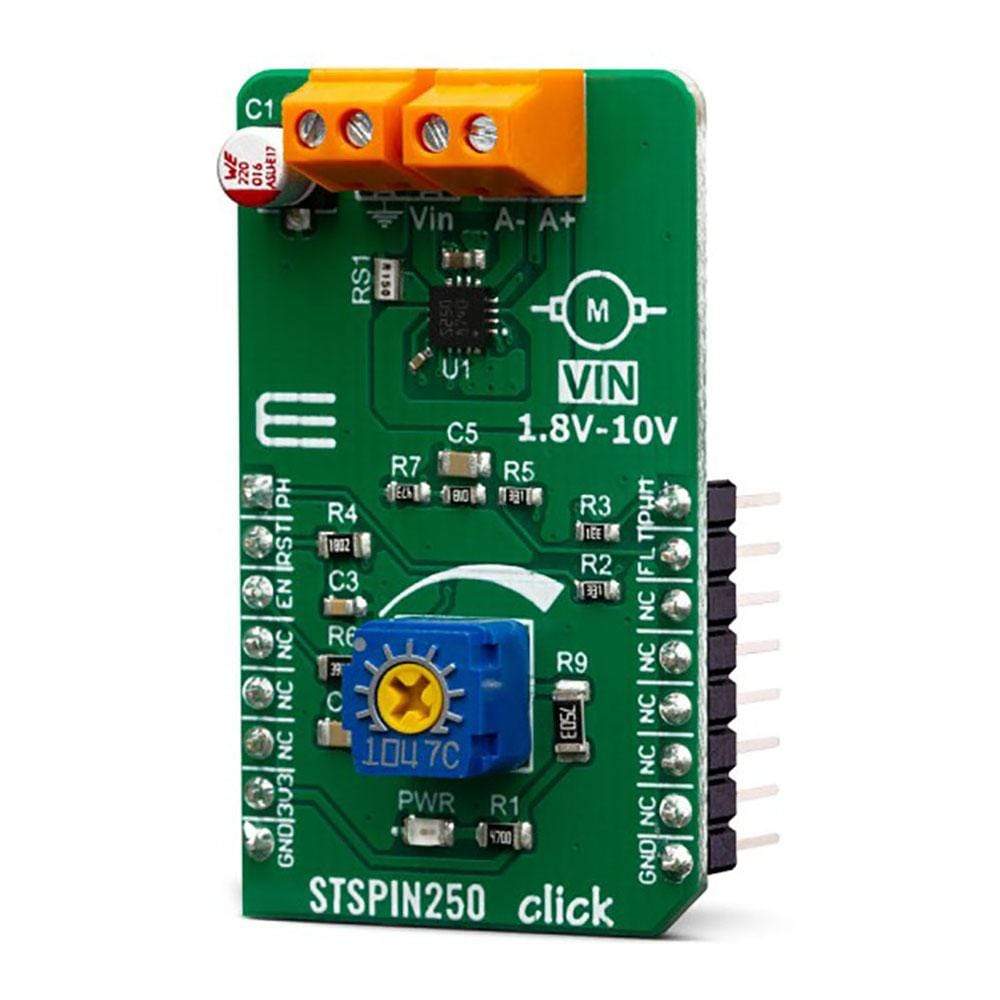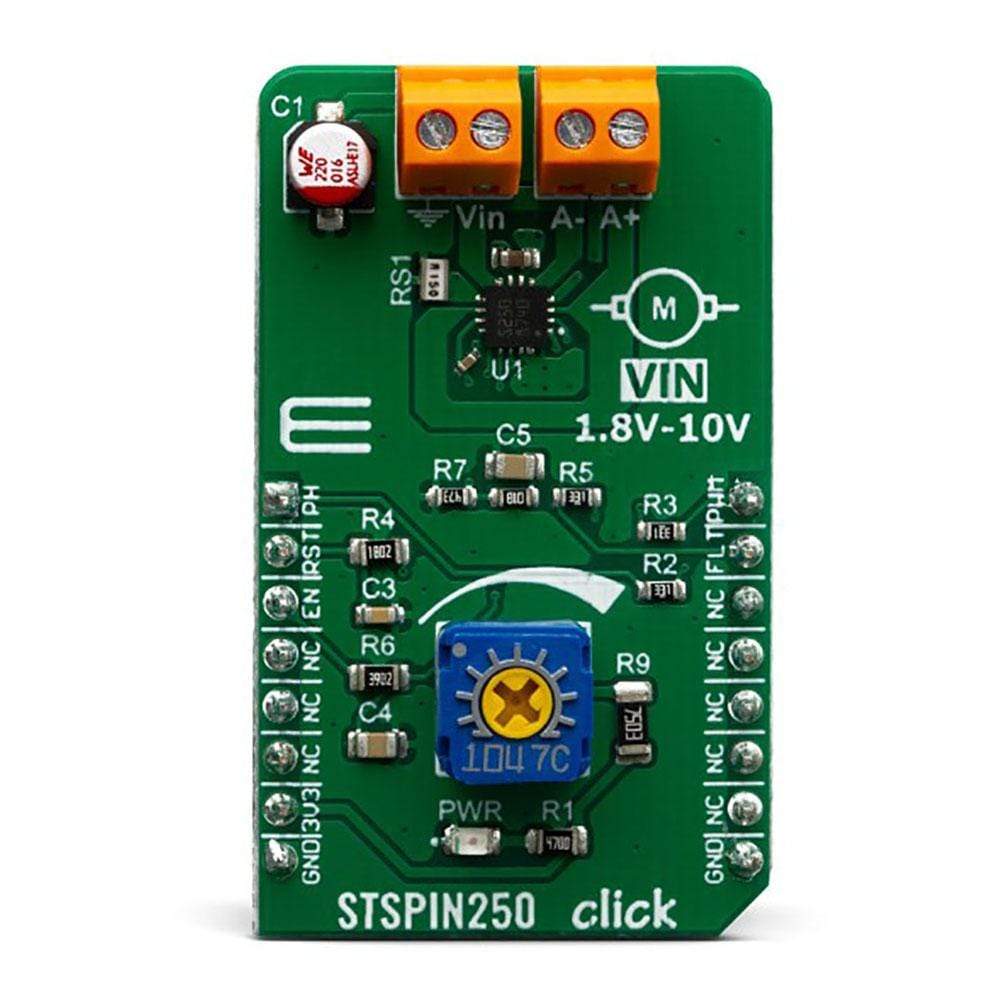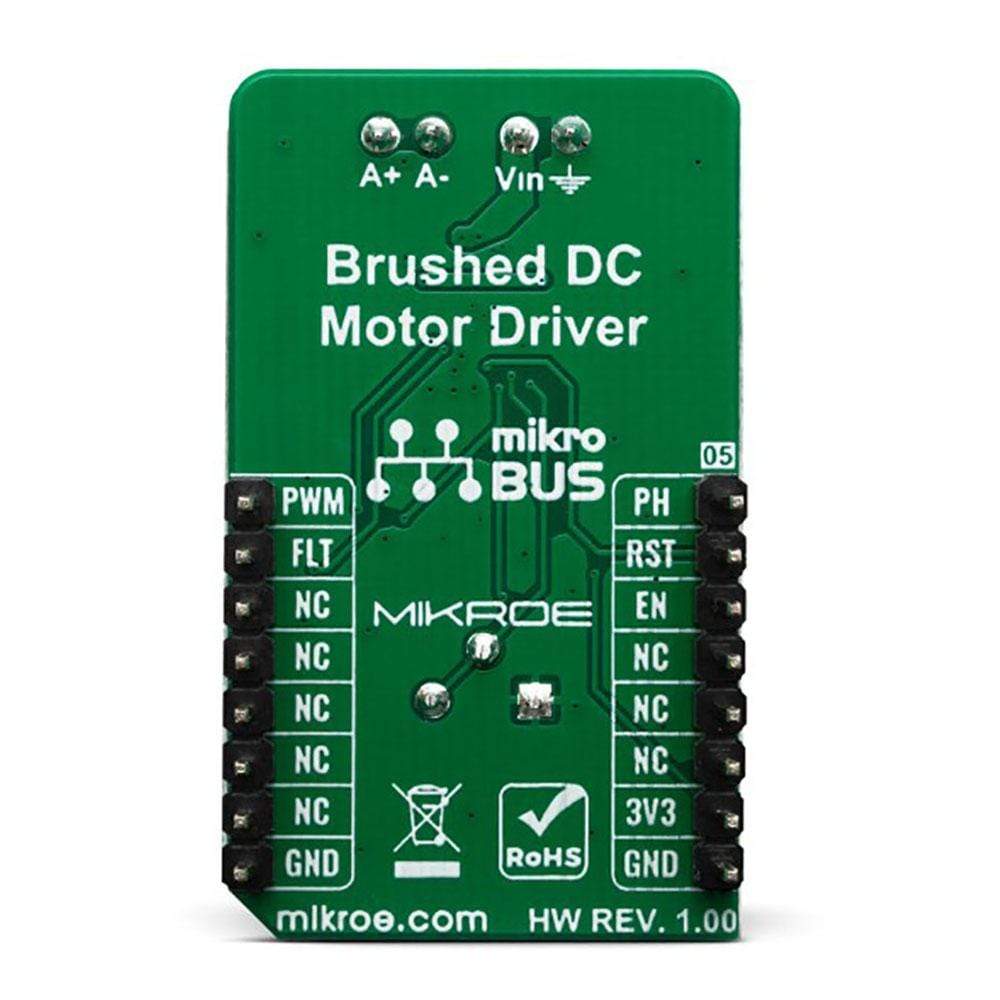


Overview
The STSPIN250 Click Board™ is a brushed DC motor driver with the current limiting and current sensing. It is based on the STSPIN250, a low voltage DC brushed motor driver. It is optimized for portable and low voltage applications, featuring the lowest standby current available on the market (max 80nA).
Thanks to the low ON resistance of the MOSFETs used for its output stage, the STSPIN250 represents a highly efficient DC motor driver, with a very small (3x3mm QFN) form factor. The device implements a PWM current control with the fixed OFF time, along with a full set of protection features. The STSPIN250 Click Board™ can be used with the step motor voltage ranging from 1.8V to 10V, and current up to 2.6A.
Downloads
Das STSPIN250 Click Board™ ist ein bürstenbehafteter Gleichstrommotortreiber mit Strombegrenzung und Strommessung. Es basiert auf dem STSPIN250, einem Niederspannungs-Gleichstrommotortreiber mit Bürsten. Es ist für tragbare und Niederspannungsanwendungen optimiert und verfügt über den niedrigsten Standby-Strom auf dem Markt (max. 80 nA).
Dank des niedrigen Einschaltwiderstands der für die Ausgangsstufe verwendeten MOSFETs ist der STSPIN250 ein hocheffizienter DC-Motortreiber mit einem sehr kleinen Formfaktor (3 x 3 mm QFN). Das Gerät implementiert eine PWM-Stromsteuerung mit fester Ausschaltzeit sowie einen vollständigen Satz von Schutzfunktionen. Das STSPIN250 Click Board™ kann mit einer Schrittmotorspannung von 1,8 V bis 10 V und einem Strom von bis zu 2,6 A verwendet werden.
| General Information | |
|---|---|
Part Number (SKU) |
MIKROE-3543
|
Manufacturer |
|
| Physical and Mechanical | |
Weight |
0.025 kg
|
| Other | |
Country of Origin |
|
HS Code Customs Tariff code
|
|
EAN |
8606018715695
|
Warranty |
|
Frequently Asked Questions
Have a Question?
Be the first to ask a question about this.



